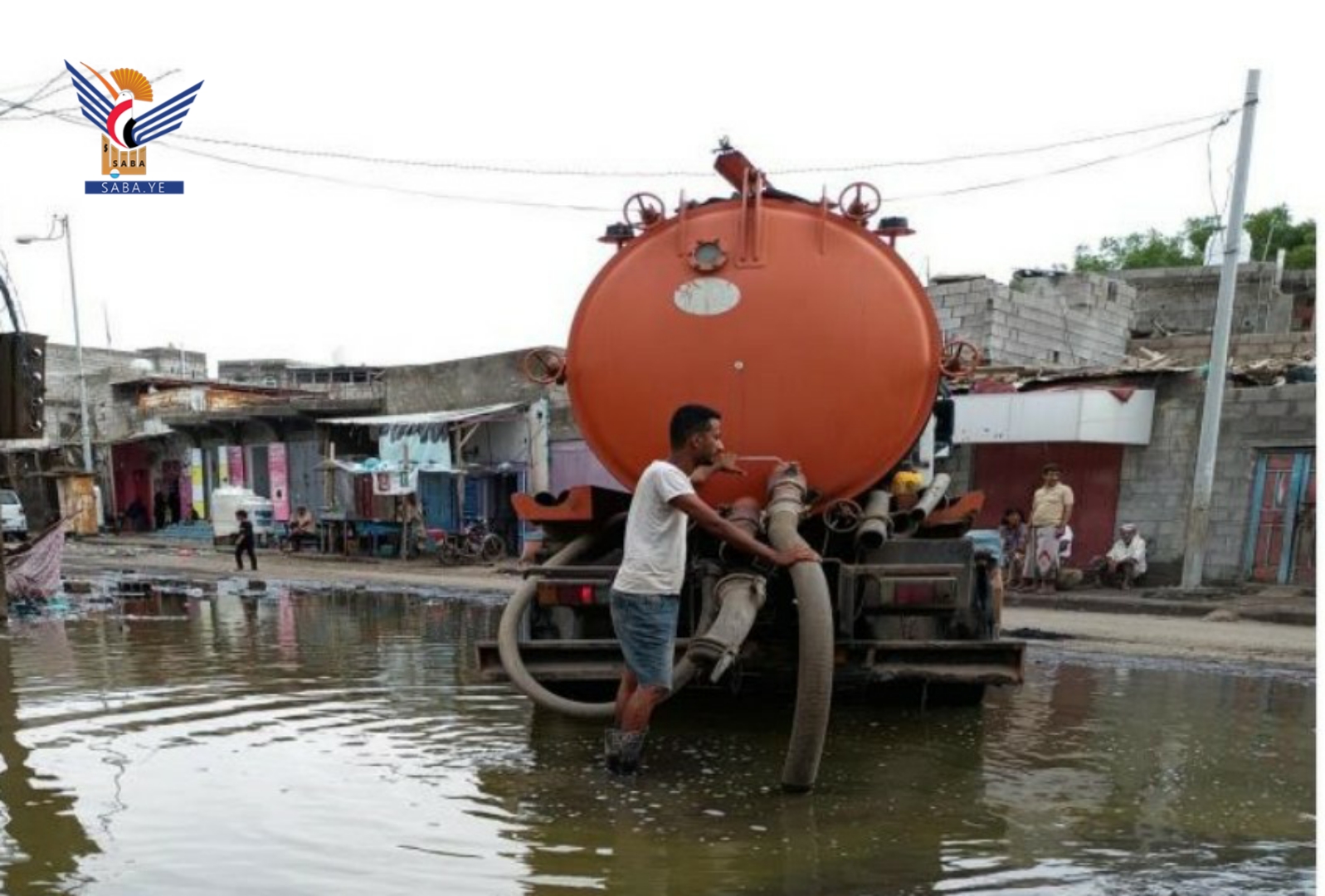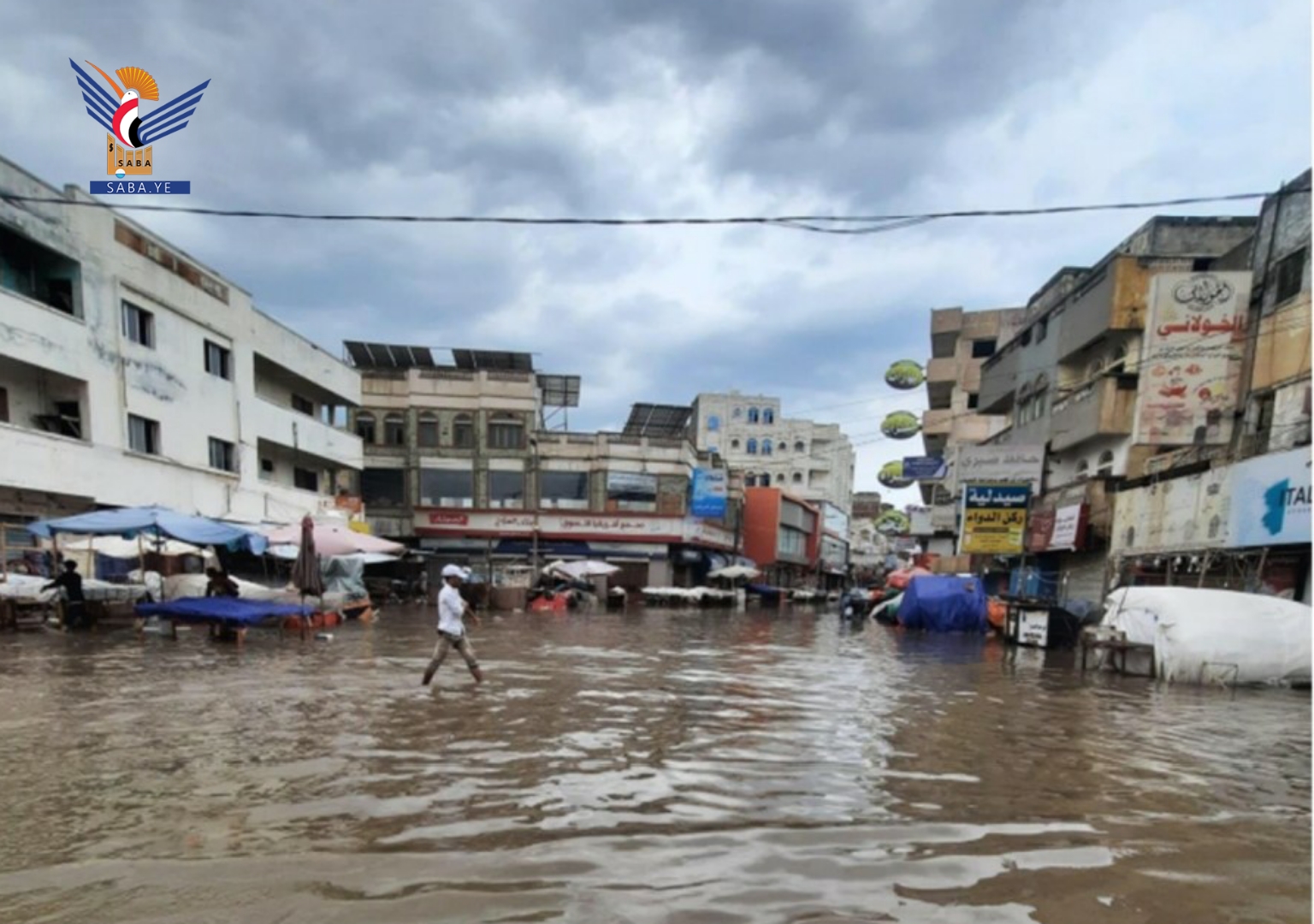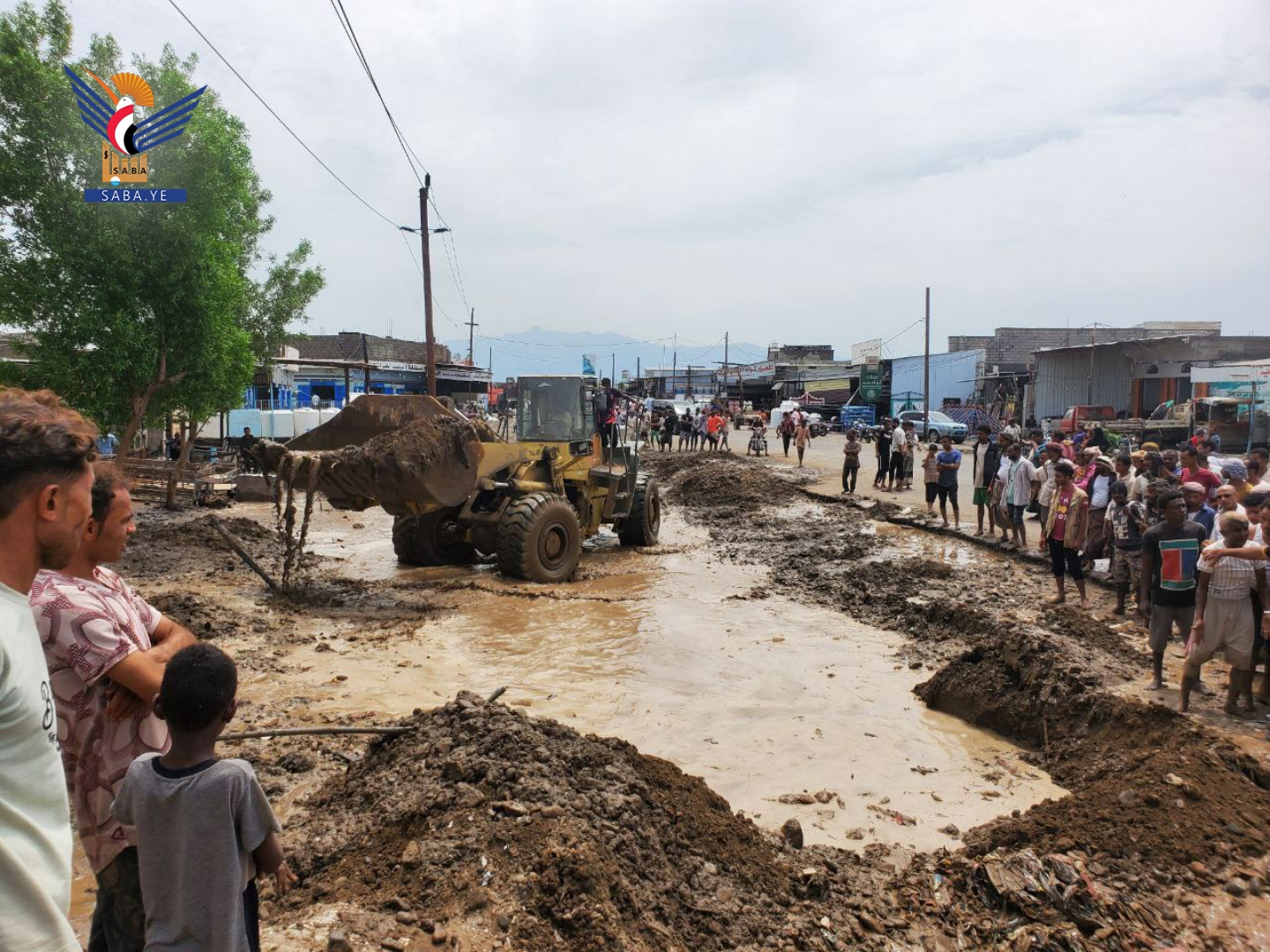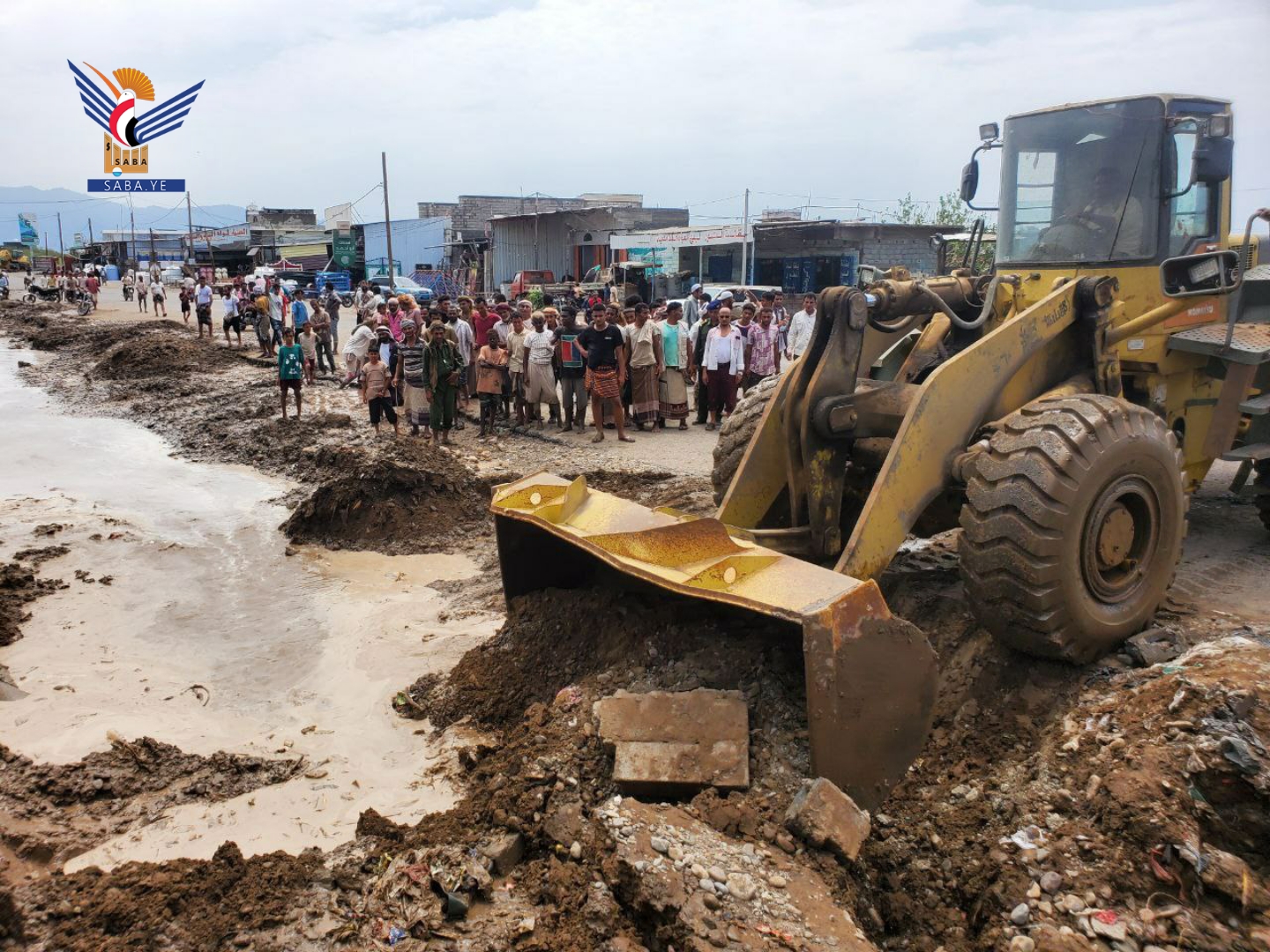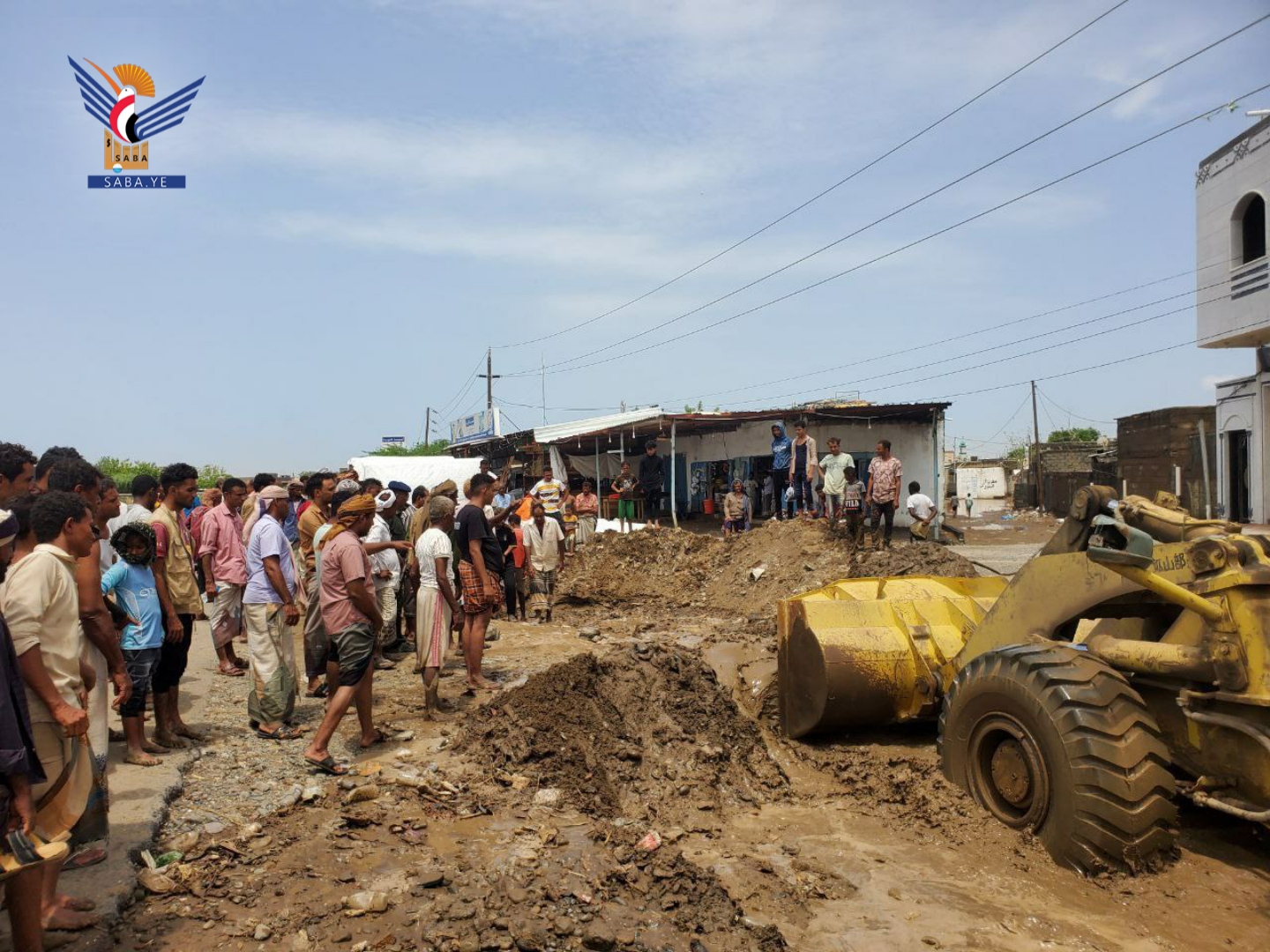
According to reports documenting the victims until 21 August, the number of those who died due to torrential floods in most of the governorate's districts topped 67 deaths and 12 injuries.
A report issued by the Emergency Committee, a copy of which was received by the Yemeni News Agency (Saba), states that 20 people died in Zabid District, seven in Ad-Doraihimi District, nine in Az-Zahra District, two in Al-Marawa'ah District, four in Bajil District, and two people in Bara' District.
It added that five people died in Ad-Dahhi District, three in Az-Zaidiyah District, three in Al-Munira, Al-Qanawis and Al-Luhayyah Districts, five in Al-Sukhnah District, five in Bait Al-Faqih District, and two people in Al-Jarahi and Jabal Ras Districts.
According to the report, 12,798 families were affected in the villages and Tehama regions, especially those located near valleys overflowed with rain torrents unprecedented in several decades, and about 2,222 people were displaced from their villages due to the complete demolition of their homes.
With regard to the damage to homes, the report stated that the flood waters left 3,357 homes completely destroyed and 5,519 homes partially damaged. The floods swept away 6,522 palm leaves-built homes, and more than 2,000 other homes, some of which were built with blocks.
In relation to agricultural lands and livestock, the floods swept away vast areas of agricultural fields, the damages of which are being comprehensively assessed and counted, including damages of 390 fields of agricultural crops in Al-Mansouriyah District and the death of 1,391 sheep, 54 cows, and 8,403 beehives.
In terms of damages to roads, bridges and means of transportation, the report indicated that the floods swept away 1,337 sand roads in various districts of the governorate, 32 asphalt roads, and 21 rainwater drainage culverts, in addition to 19 vital bridges and 18 means of transportation, eight of which were swept away.
The report says that the continuous heavy rains caused damages to the electricity grid and lines, noting that efforts were continuing to repair them by the technical emergency committee in various districts of the governorate, which is taking emergency steps on an ongoing basis to ensure the continuity of electricity service.
The floods damaged sewage basins in the city of Hodeida, which poses health and environmental risks with sedimentation basins getting mixed with oxidation.
While emergency procedures and treatments are being taken to relieve the affected communities and minimize the damage, the flow of floods from the mountainous heights continues to the Tehama plain areas, which requires concerted efforts to avoid further loss of lives and properties.
The presidential committee tasked with assessing and treating flood damage in Hodeida Governorate, in cooperation with the local authority, field teams and relevant offices, contributes to mitigating the repercussions of this damage by removing waste, opening roads, pumping flood water and providing assistance to affected families.
The field treatment work to confront the flood damage is evident in what is implemented by field teams affiliated with the Cleanliness and Improvement Fund, the Executive Unit for Projects, the Water and Roads & Bridges Corporations, the Tehama Development Authority, the Hodeida Support Fund, the Military Works, the Civil Defense and Coast Guard Services and a number of related authorities.
Water continues to be pumped from citizens' homes, neighborhoods and alleys, in conjunction with repairing culverts and bridges, rehabilitating sandy roads and flood channels, interventions in repairing and leveling blocked roads, and sending civil defense teams to valley areas to prevent people from crossing.
Emergency work and interventions include implementing projects and works to divert floodwaters to the sea, creating earthen barriers and other treatments to allow vehicles and cargo carriers to continue passing through main roads and lines flooded by floodwaters.
Among the work and interventions are filling swamps, digging, leveling some streets and main and secondary entrances to districts, reopening and clearing culverts, and creating earthen barriers to divert floodwaters towards agricultural areas to benefit from rainwater.
The parties participating in the emergency response process are using equipment and machines to work in the field in cooperation with civil defense teams to reduce the effects and repercussions of floods in various regions and districts of Hodeida Governorate.
The branch of the Supreme Council for Humanitarian Affairs in the governorate is making extensive efforts in cooperation with humanitarian partners to provide emergency relief to families whose homes and properties have been severely damaged, as nearly ten thousand families have been provided with food, shelter and cash assistance.
Chairman of the Presidential Committee for the Assessment and Treatment of Flood Damage in the governorates of Hodeida, Raymah and Hajjah, Dr. Hussein Maqbouli, praised the role of the authorities that are making efforts to address the damage and provide relief to those affected by the floods in Hodeida districts.
He hailed the interest of the revolutionary leadership, the Supreme Political Council and the government that showed keenness to follow up on the extent of the damage and contribute to its treatment. He stressed the need for combining official and community efforts to implement projects related to draining floods and to the affected families.
For his part, Deputy Al-Bishri appreciated the efforts of the Presidential Committee and the role of field work teams and the competent authorities in implementing emergency work to tackle the flood damage and provide aid and assistance to families whose homes were destroyed.
He called on everyone to work responsibly, each in his/her position, to avoid future damage through careful planning to drain floods, implement the work assigned in terms of following up on the maintenance of rainwater drainage channels and culverts, and finding strategic and available alternatives.
K.N
